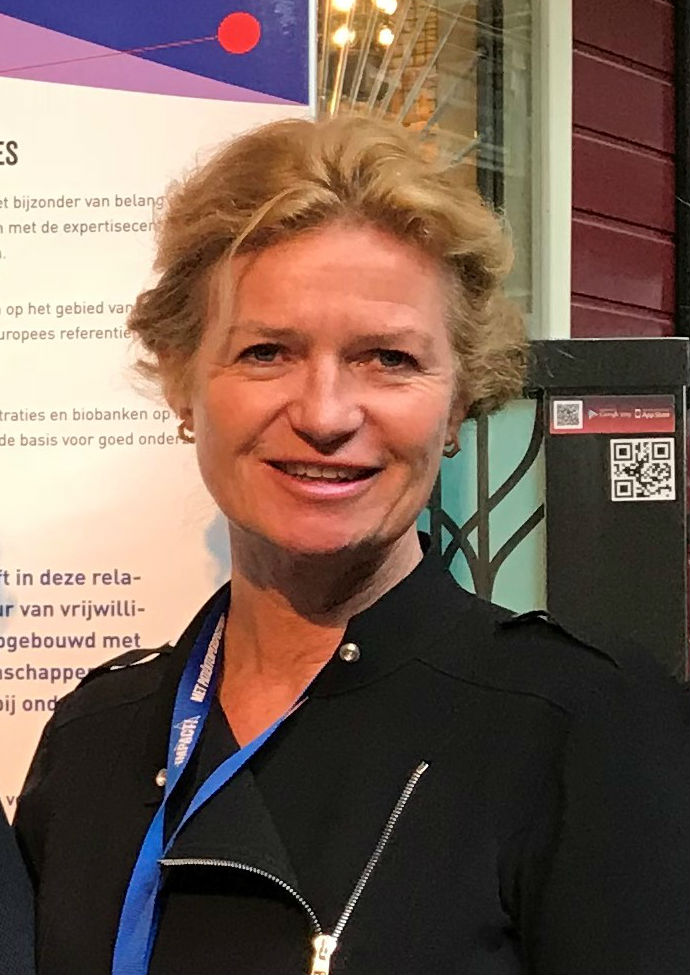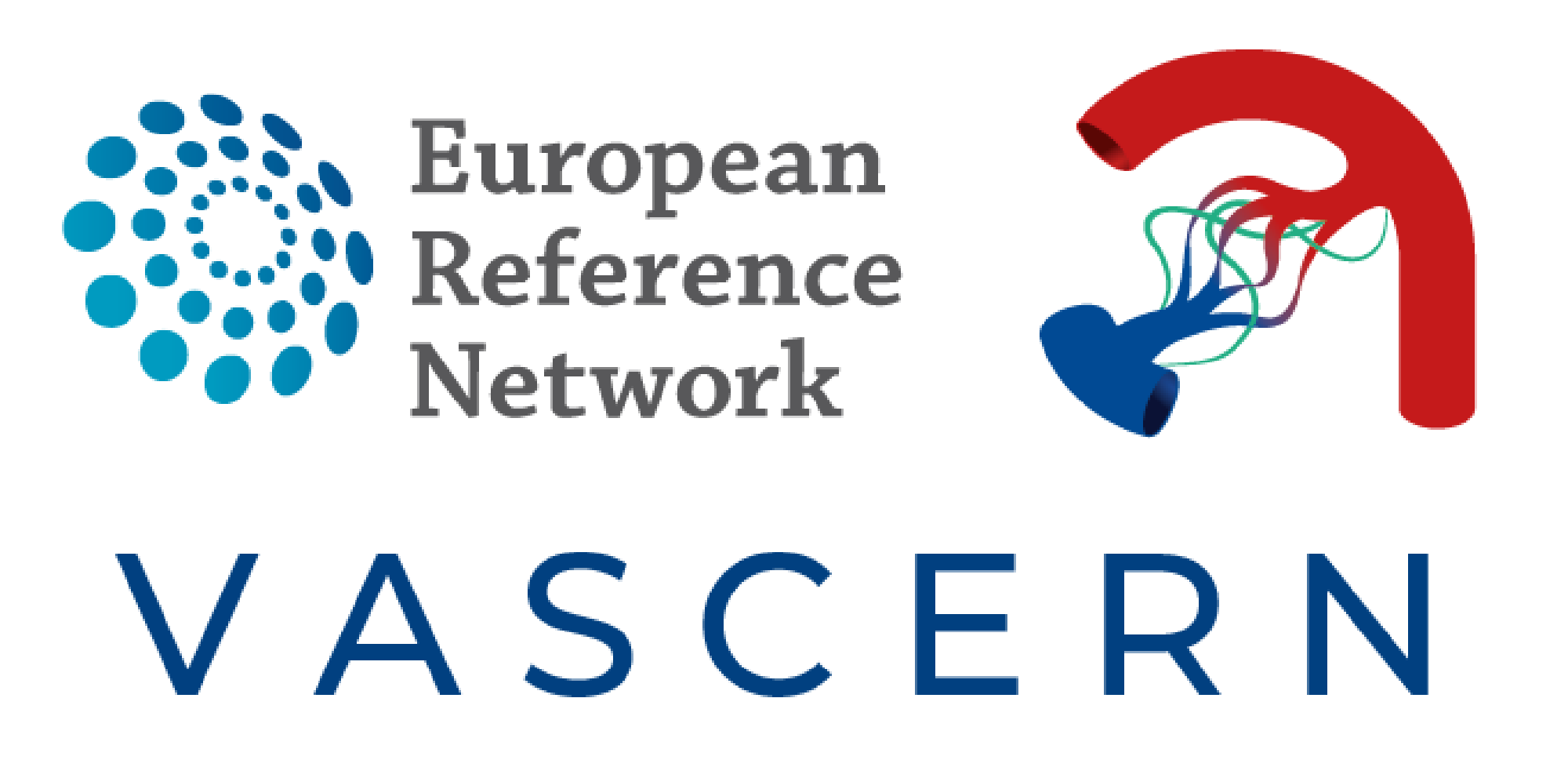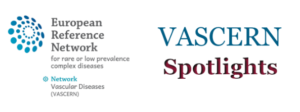
VASCERN Spotlights: Caroline van den Bosch

In this month’s VASCERN Spotlights we meet Caroline van den Bosch from the Netherlands. Caroline is the European Patient Advocacy Group (ePAG) Co-Chair for the Vascular Anomalies Working Group (VASCA WG) and shares with us how she became involved in VASCERN, the history behind the creation of her patient organization, HEVAS, and her personal highlights of the ERN journey to date.
1. How did you become involved in the VASCERN project?
The Dutch Patient Alliance for Rare and Genetic Diseases (VSOP) involved our patient organization, the Dutch Association for patients with Haemangioma and Vascular Malformations (HEVAS), in the assessment procedure of the National Centres of Expertise from 2014 onwards. This was part of the National Plan for Rare Diseases in the Netherlands, as agreed upon during a Council meeting of the Health Ministers of the EU in 2009.
Candidate centres of expertise were tested from two perspectives: by healthcare experts/professionals and by patient organisations (POs) involved. HEVAS evaluated the 4 centres in the Netherlands and informed them about the next step: answering the call to become a member of VASCERN. Radboud University Medical Centre, in the Netherlands, put a lot of effort into their application for the ERN and their Expertise Centre for Vascular Anomalies (HECOVAN) was acknowledged as an HCP for VASCERN’s VASCA WG.
Through this process HEVAS became aware of the creation of VASCERN and the involvement of POs. I applied to become an ePAG representative and afterwards was nominated ePAG co-chair for the VASCA WG. The kick-off meeting in Vilnius in March 2017 was a wonderful experience to meet all the HCP and patient representatives that were involved in VASCERN.
2. How do you as an ePAG representative participate in the activities of VASCERN?
I represent the interests of the patient community in Europe in the monthly virtual conference calls with the VASCA WG. In addition I participate in the monthly EURORDIS calls with the other ePAGs active in VASCERN. I try to involve other vascular anomalies POs in Europe to become active in VASCERN, and I inform them via email on what could be relevant for them. Three other POs in Europe are very active and we have bi-monthly conference calls. Last, but not least, I participate in yearly face-to-face meetings with the VASCA WG, this year happening in May, and the annual VASCERN seminar in the fall.
What makes the VASCA WG different from many of the other WGs, is that our WG comprises approximately 45 to 50 vascular anomalies, some of which very rare. The other WGs mainly focus on one or two well described vascular diseases, and many have a very long history of specialized HCPs and well organised POs. There are only a few countries with an umbrella organisation for all vascular anomalies, the other POs are very small and focus on only one of the 50 vascular diseases. Due to the language barrier some of these POs focus mainly on their own patient community in their country and how they can improve their care locally. However, I feel that the interest for international collaboration is growing, which is positive.
In the Netherlands, HEVAS together with the VSOP have started to bring together the Dutch ePAGs so we are able to learn from each other’s experiences and amplify the voice of the patient community in the meetings that are foreseen with the Ministry of Health. An important goal is to integrate the ERNs into the national healthcare systems in Europe, therefore I feel it is essential that we better organise ourselves in order to join forces.
In parallel, HEVAS has initiated the formation of the national network of Centres of Expertise in the Netherlands. As the three other centres in the Netherlands most likely will not be accepted as HCP members in the next VASCERN call, it will be crucial that the existing centres cooperate with each other and with the HCP that is already active in the VASCA WG.
If one is faced with a rare disease, the struggle of finding the right diagnosis and care can be a lonely battle. I trust that the ERNs can contribute in making this process easier resulting in patients feeling more supported.
3. What is one thing that you would like the general public to know about the reality of living with a rare disease (or caring for someone with a rare disease)?
Within the ERN community we all know that rare diseases are more common than people think, but in the outside world people have no idea. If one is faced with a rare disease, the struggle of finding the right diagnosis and care can be a lonely battle. I trust that the ERNs can contribute in making this process easier resulting in patients feeling more supported. And of course, the final goal in some cases is to find a cure or improve treatment thanks to the ongoing (genetic) research, which can be more concentrated now on a European level.
4. Can you tell us a little about your rare disease and/or the patient association that you represent?
HEVAS is a Dutch umbrella PO for vascular anomalies, started as a patient support group in 2004, that evolved into the foundation of a PO in 2007. We have medical advisors from the Dutch Centres of Expertise and receive a yearly grant from the Dutch Government.
Although first a hemangioma patient support group for parents, we soon had a lot of adult patients with other vascular anomalies join our group. Misdiagnoses were common and parents and patients had no idea where to turn for the right treatment. We referred a lot of people to the right doctors in the Netherlands and abroad. We decided that it was crucial to become an official PO. With three other parents and patients from our group we founded HEVAS.
My son (born in 2000) had an extreme hemangioma on his chest, upper arm and shoulder which led to complications such as severe infections, bleeding, growth imbalance and cardiac failure. There was no PO in the Netherlands to find any information at that time, so I reached out to POs in the USA, attended medical conferences and read medical articles to educate myself. When the worst was over I could dedicate myself to HEVAS so that, together with the other founders, we could help other parents and patients.
Since 2007, when beta-blockers were proven to be a very efficient medication for hemangiomas, the focus of our PO has shifted to vascular malformations, which one has to cope with for life. We have several patients with extremely rare vascular diseases, of which there are only 2 or 3 cases per year in the Netherlands. In our quarterly HEVAS magazine we inform our members about new medications and treatments, interview specialists and publish four patient blogs about the daily life of living with a rare vascular disease. We have a yearly convention for parents and patients to meet each other, and we are active in VSOP. We organise medical conferences for non-specialised doctors to inform them about vascular anomalies. We also work closely together with the Centres of Expertise in the Netherlands.
As board members of HEVAS, we keep our knowledge up to date by attending international conferences such as the bi-annnual Workshop of The International Society for the Study of Vascular Anomalies (ISSVA), of which HEVAS is member. Currently we are involved in setting up official guidelines with the vascular anomaly centres, after initiating consensus documents on infantile hemangiomas since 2008. In 2015 HEVAS also set up the Vascular Anomalies Biobank, together with HECOVAN. In 2018 HEVAS was given the opportunity by the ISSVA organisation to organize a side meeting during the conference with European POs on vascular anomalies, where approximately 24 people attended. HEVAS cooperates with Dutch POs on separate vascular malformations and with other umbrella organisations in Germany and Belgium.
My personal highlight to date is that I was given the opportunity to speak about the patient perspective in VASCERN during the ISSVA Workshop in Amsterdam in 2018. This was the first time that a timeslot was given to a non-medical/scientific topic, which proves that the medical world is becoming more open to the patient voice.
5. What has been your most memorable moment as an ePAG representative so far?
The kick off meeting in Vilnius in 2017 showed us the spirit of the ERNs and gave me the energy to take on this important work. I believe in the idea behind creating ERN’s, despite the many challenges.
The physicians in the VASCA WG are open-minded towards the patient perspective and are mostly open for our suggestions, which is a positive experience.
I also enjoy working closely with the other co-chairs from other countries as it broadens my horizons with regards to the cultural differences in Europe. Also, one learns the different ways in which healthcare is set up in the various Member States. On one side that is very interesting, on the other side we learn that ERN solutions cannot always be copied to other countries, due to different legislations.
My personal highlight to date is that I was given the opportunity to speak about the patient perspective in VASCERN during the ISSVA Workshop in Amsterdam in 2018. This was the first time that a timeslot was given to a non-medical/scientific topic, which proves that the medical world is becoming more open to the patient voice.
6. As a patient representative, what is your hope for VASCERN and for the ERNs in general? What are the major challenges ahead?
Creating an active European network of Specialised Centres for Vascular Diseases is beneficial for people who suffer from these rare conditions. I hope that the European grants that are made available can boost research opportunities for HCPs from different countries who can then join forces with a larger budget. This would be wonderful.
A concern is that specialised centres who are left out of the ERN might not accept VASCERN outcomes/publications if they have not been involved. The VASCA WG, when creating elaborate documents (for example the patient pathways or guidelines), should think of how to include any comments and/or feedback from centres outside of the ERN. This could be via feedback to ERN members or via the national networks. The initial documents could then be adjusted and updated, as necessary.
Another challenge will be to connect VASCERN, via links with national networks, to the centres and specialists who are not ERN-members. Then we can maximize the benefit of this important structure that has been created. Structural funding from the Member States must be secured the coming years so that the ERN can be embedded in the National Health Systems, which will be a major challenge.
Last, but not least, the workload that is asked from POs, almost all of whom are volunteers, is significant. A compensation for the time away from paid work should be considered to avoid burn-out in these ePAGs who mostly all have a job and family next to this volunteer work. The sustainability of their participation is an important issue for the coming year, as the workload has grown considerably since 2017.


